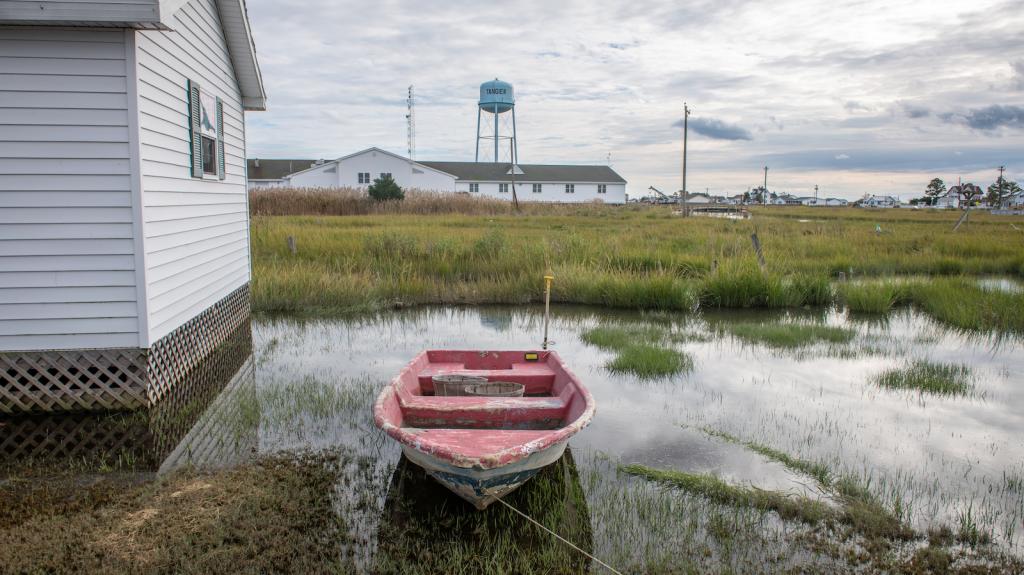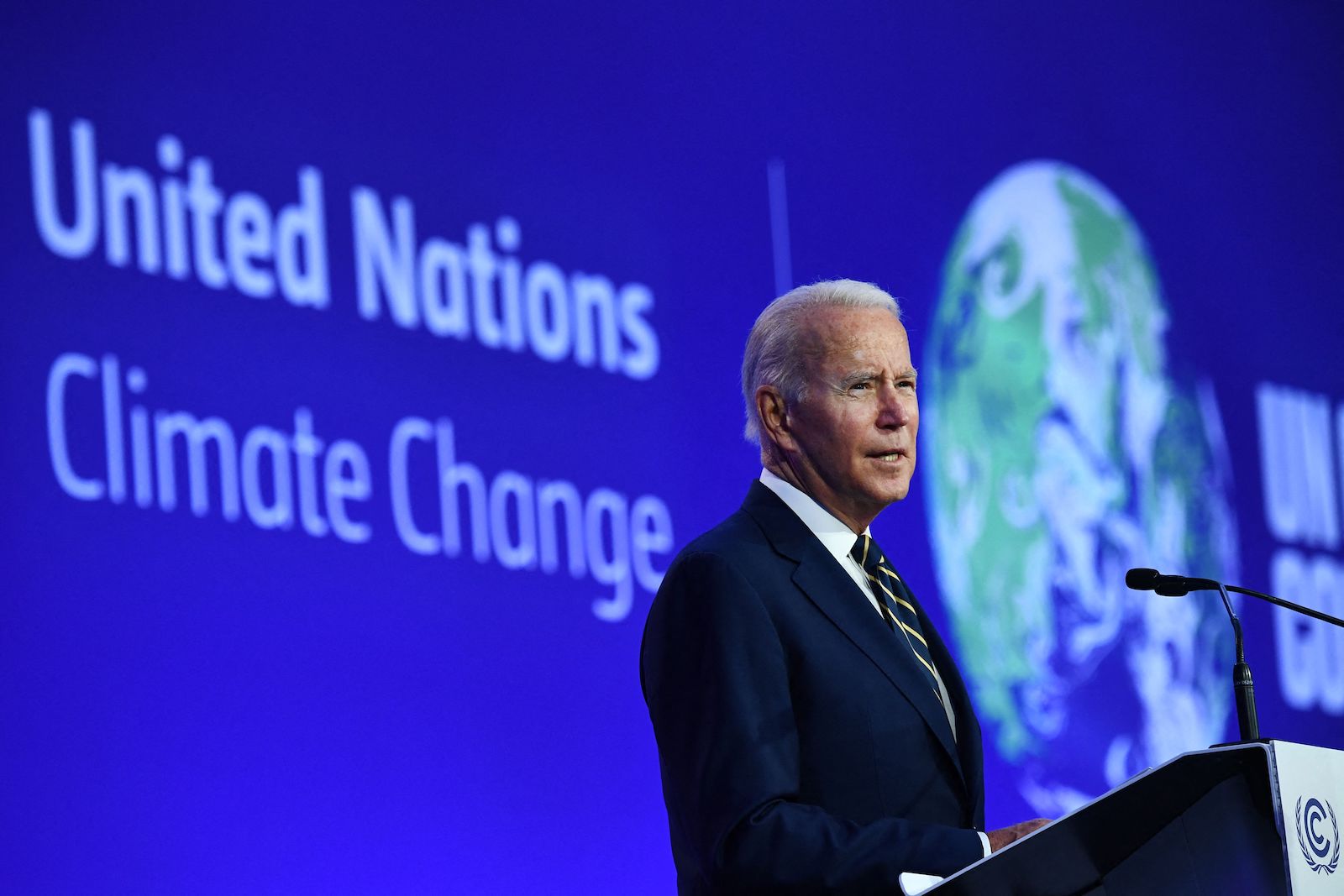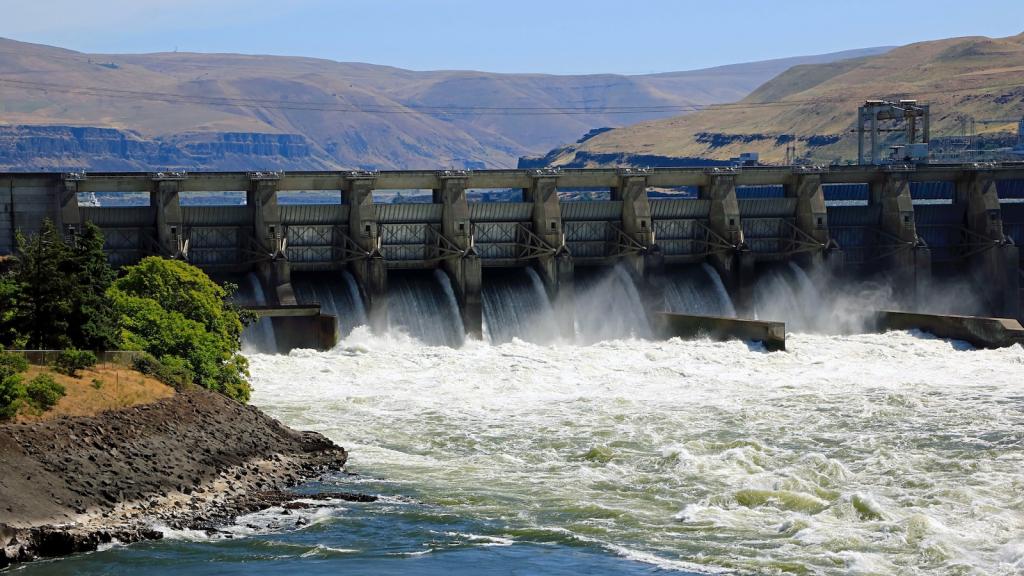This story was originally published by The Guardian and is reproduced here as part of the Climate Desk collaboration.
The draft text is the most important document that will emerge from the COP26 climate summit in Glasgow. Unlike the last major climate conference, in Paris in 2015, what emerges here will not be a new treaty, but a series of decisions and resolutions that build on the Paris accord.
Those COP decisions have legal force in the context of the Paris Agreement, so this is a powerful document. But it is also a document that can only be accepted by the consensus of all parties, therefore much of the language is cautious and some is ambiguous or open to interpretation, to the frustration of the countries who want to move faster.
The document was drafted by the United Kingdom presidency, but does not represent the UK’s view — rather, it is a reflection of what the UK has been told by all the parties in Glasgow. Delegations here are now consulting with the leaders of their countries and other senior officials.
The key aim for COP26 is to “keep 1.5 degrees Celsius alive.” There are a few notable victories in this text: a mention of phasing out coal and fossil fuel subsidies — the first time that has appeared in a COP decision — and strong language on the scientific imperative to stay within 1.5 degrees C of global heating. But whether this text is enough to achieve that overarching goal is still up for debate.
Katie White, the executive director of campaigns at WWF, said: “It’s essential that we recognize this as the start line, not the finish. If we are to come close to reaching our 1.5 degrees C target in time, ambition and momentum need to accelerate across the board.”
Here are some of the key elements in the seven-page draft:
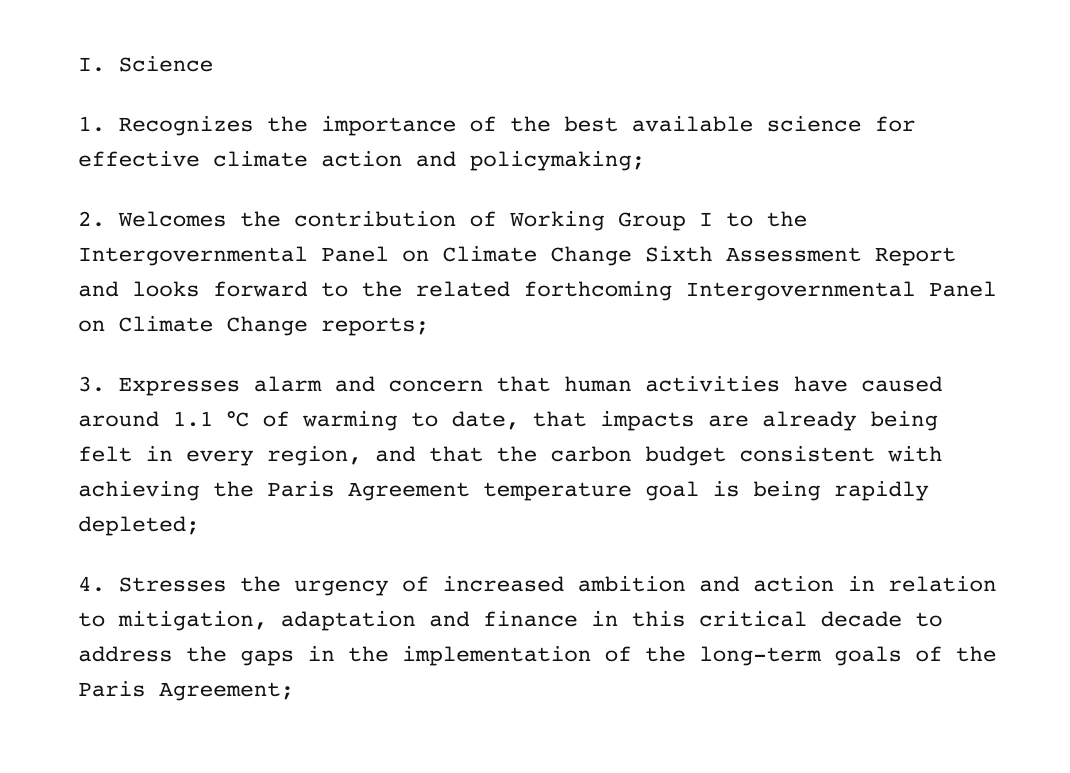
After the preamble, the first part of the text restates the scientific imperative to tackle the climate crisis. This section refers to the Intergovernmental Panel on Climate Change, or IPCC, report that came out in August, the starkest warning yet that the 1.5 degrees C threshold is a vital planetary boundary, beyond which some of the impacts of extreme weather are likely to become irreversible, and that we are running out of time to cut emissions and stay within 1.5 degrees C.
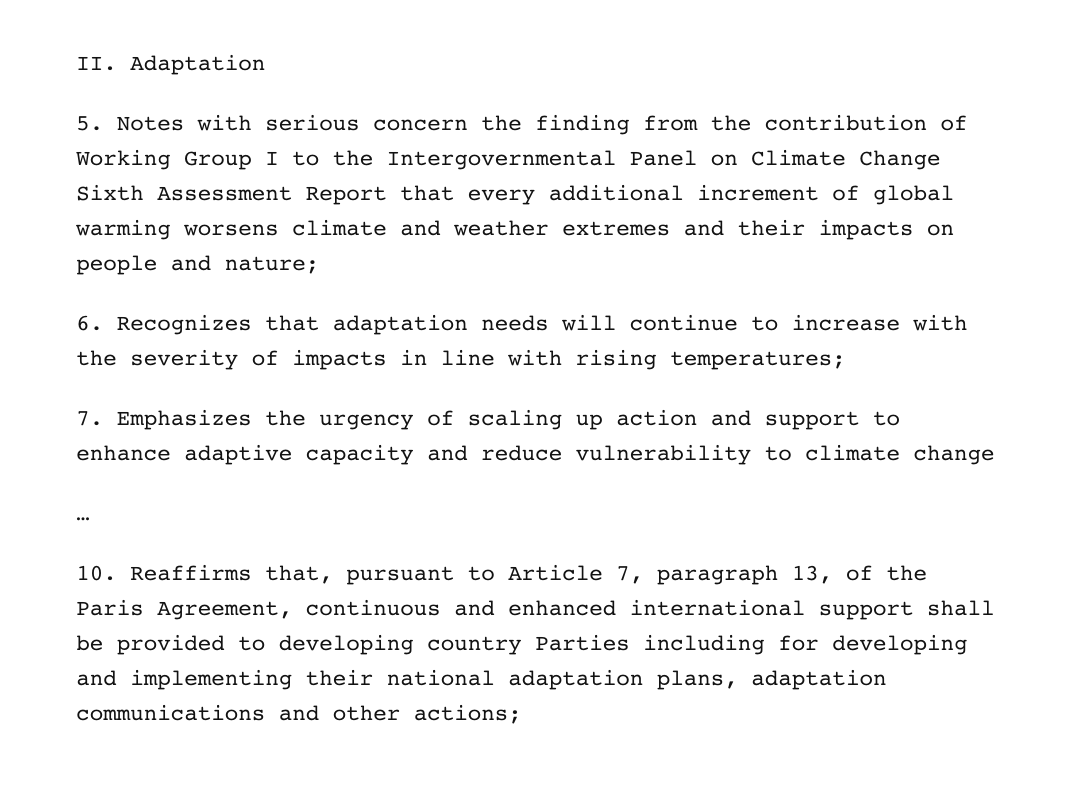
It is also significant that adaptation comes so high up. This is a key concern of developing countries. Extreme weather has affected every continent in the past year, from wildfires in the United States and Australia to floods in Europe and China. For developing countries, preparing for these impacts is near-impossible without additional finance from the rich world.
Developing countries feel strongly that the importance of adaptation has been ignored up to now, so for the COP “cover decision,” which summarizes countries’ commitments, to address this as a priority is an important win for them.
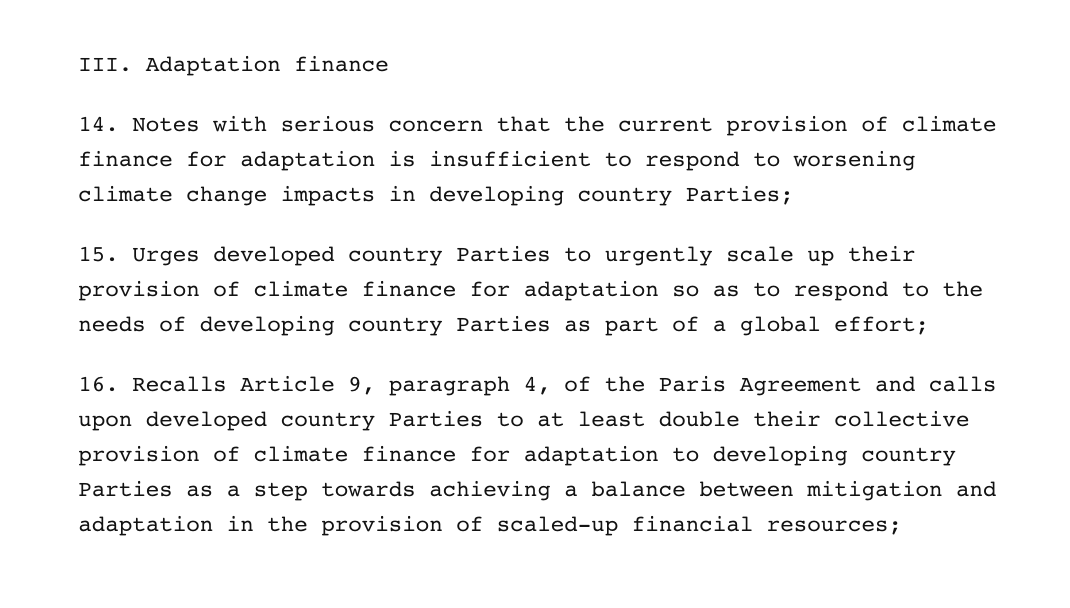
These are the key paragraphs for developing countries, which want the finance they receive for adaption to be at least doubled from current levels. They will want to ensure this commitment stays in future drafts, or is strengthened further.
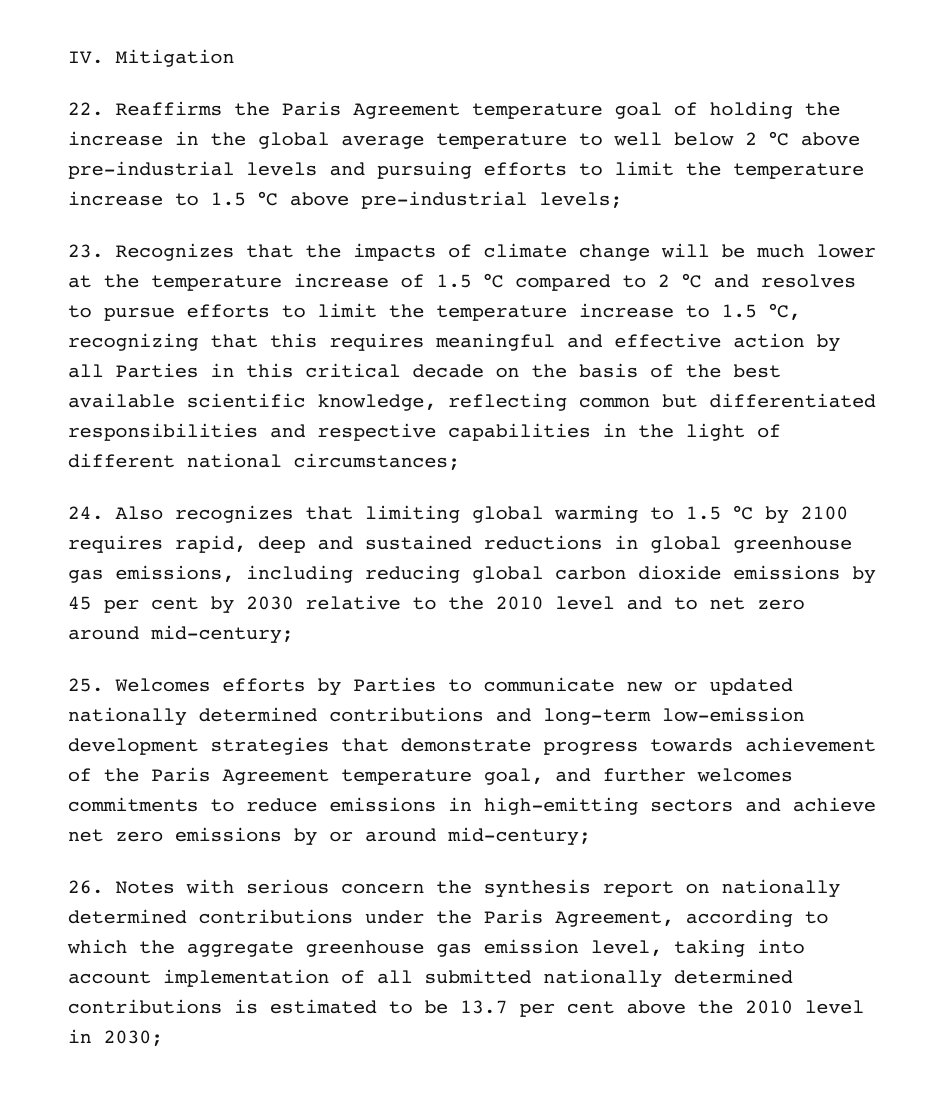
Mitigation is United Nations-speak for cutting emissions, so these are the key paragraphs. It is significant that this part of the text explicitly recognizes the IPCC advice that emissions cuts of 45 percent are needed by 2030 — to have that stated so clearly, rather than alluded to vaguely, is a big win for those who want to focus on 1.5 degrees C rather than the upper limit of 2 degrees C in the Paris Agreement.
The NDCs — nationally determined contributions, which are countries’ national plans and targets for cutting or curbing greenhouse gas emissions in the next decade — are at the heart of the Paris Agreement and are the key focus if the world is to stay within 1.5 degrees C. We know that the NDCs presented at COP26 are inadequate to stay within 1.5 degrees C — research by Climate Action Tracker on Tuesday found that current 2030 plans would take us to disastrous heating of 2.4 degrees C.
The explicit reference to the U.N. synthesis report — basically, an assessment of countries’ national plans by the U.N., similar to the Climate Action Tracker research — is also important, as is the explicit mention of how far countries are above the 2010 level of emissions.
In among the legalese and the jargon, this adds up to a clear warning — we are not doing well enough on emissions cuts and must do better.
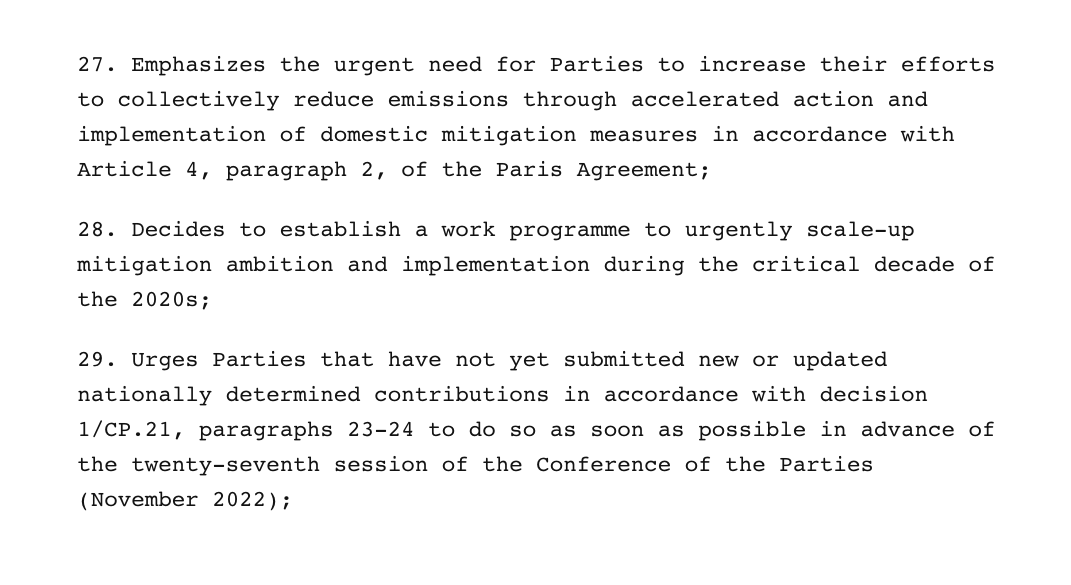
Setting up a work program may not sound like much, but in United Nations Framework Convention on Climate Change terms this is dynamite. Having a work program means that this item is permanently on the agenda for COPs and cannot be ignored. So every time there is a COP – which is every year – this gap between what countries are aiming for in their NDCs and the level of emissions cuts needed to stay within 1.5 degrees C and 2 degrees C will be addressed.
This is a big step forward. Some will be disappointed that the language on bringing forward NDCs is only “urging” rather than mandating, but the work program is a definite win.

And here’s potentially the most important paragraph in the whole document. Under the Paris Agreement, countries need only revise their NDCs every five years. This is not enough to stay within 1.5 degrees C, as under that framework we would be stuck with the current inadequate NDCs — which imply heating of 2.4 degrees C, according to Climate Action Tracker — until 2030 effectively, because in 2025 under the Paris Agreement the discussion will move on to post-2030 targets.
Scientists say we need to cut emissions by 45 percent this decade for a 1.5 degrees C limit to be viable, so if countries stick rigidly to the Paris timetable the 1.5 degrees C threshold will almost certainly be breached.
Developing countries, and some major developed economies, are desperate for countries to be forced to come back to the negotiating table yearly until the NDCs are aligned with 1.5 degrees C.
Paragraph 30 of this document is what would achieve that aim. Some are unhappy that it is urging rather than mandating, and some are concerned that the reference to the Paris temperature goals could be interpreted as 2 degrees C rather than the all-important 1.5 degrees C.
But a reference to the Paris temperature goals includes 1.5 degrees C, proponents argue, and this was probably the strongest language available to ensure this gets through. This text would bring countries back to the table next year for their NDCs to be subject to scrutiny and with a clear focus on updating them.
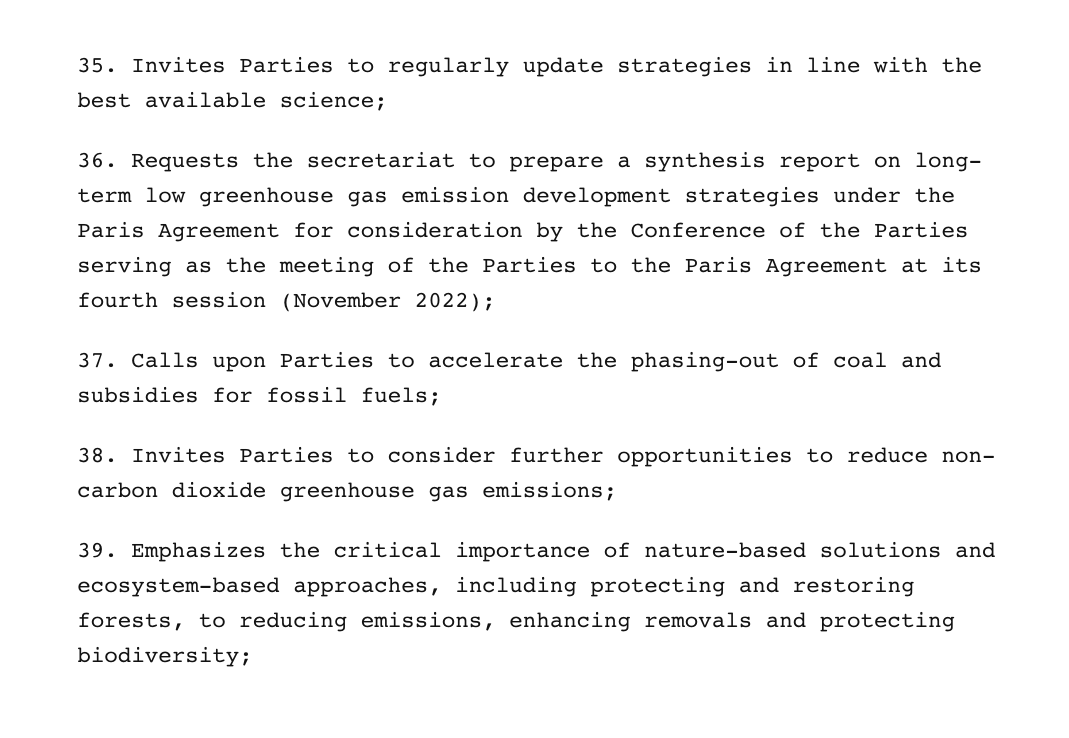
Here is another major step forward — for the first time, a recognition that the dirtiest fossil fuel, coal, must be phased out.
There has never been an explicit reference before in a COP decision to the need to phase out coal or other fossil fuels.
That may seem an incredible omission, given that fossil fuels are at the heart of the problem here, but this process moves by consensus and powerful vested interests for fossil fuels from oil-producing countries — Saudi Arabia, Russia, Australia have been the prime movers but others have also been involved — have ensured that mention of fossil fuels has been kept out.
This reference is likely to be fiercely fought over, but its presence in the text sends a strong message, and was welcomed by green campaigners and developing countries. If it stays in, it sets a new and important precedent at these talks.

Another means of strengthening NDCs, by having world leaders return to the table in 2023. That is also the year of the “global stocktake” under Paris, which is another means of forcing countries to revise their NDCs in line with 1.5 degrees C and scientific advice. So this par, though weak, is also helpful to the 1.5 degrees C effort.
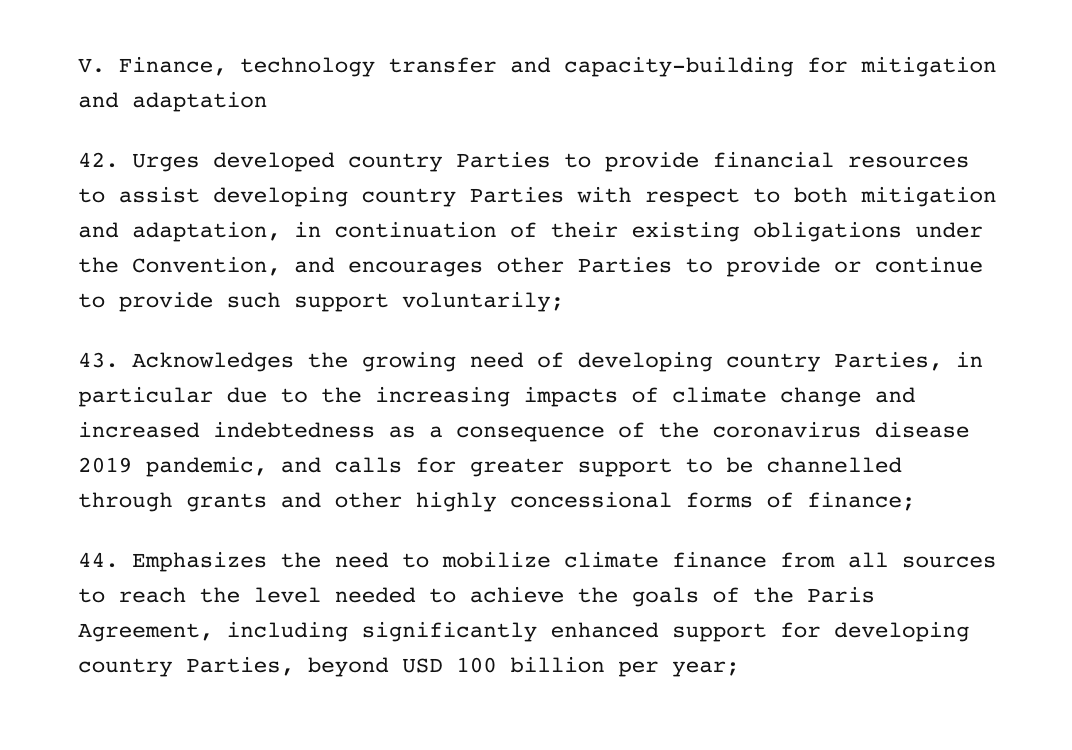
Finance is also a key sticking point for developing countries. They have been infuriated by the failure of the rich world to meet a totemic target of providing $100 billion a year to the poor world to help them cut emissions and cope with the impacts of extreme weather — a promise made in 2009 that was supposed to be fulfilled by 2020.
Instead, according to the latest OECD figures, that target was missed by $20 billion in 2019. More recent findings from Germany and Canada suggest the target will be met in 2023, and by 2025 finance will reach $119 billion, bringing the average from 2020 to 2025 above $100 billion a year. But developing countries are angry that there is not more explicit acknowledgement of this failure, and that rich countries appear reluctant to engage in discussing how finance can be increased in future.

The phrase “loss and damage” refers to the impacts of extreme weather that are so catastrophic that they cannot be prepared for or adapted to. For many developing countries, this is totemic – and this is the first time that loss and damage has been directly addressed in a COP decision in this way.
However, the issue is contentious as some developing countries interpret loss and damage as implying they should receive compensation for the impacts of extreme weather upon them. Developed countries will not agree to any language that contains that term.
At the last COP in 2019, a mechanism for addressing loss and damage was formulated. The Santiago Network would help with communications and sharing information and solutions to loss and damage, but it is not a funding mechanism. That’s what is missing here — a way of funding the loss and damage that has been inflicted on the world’s poor by a problem they did the least to cause.
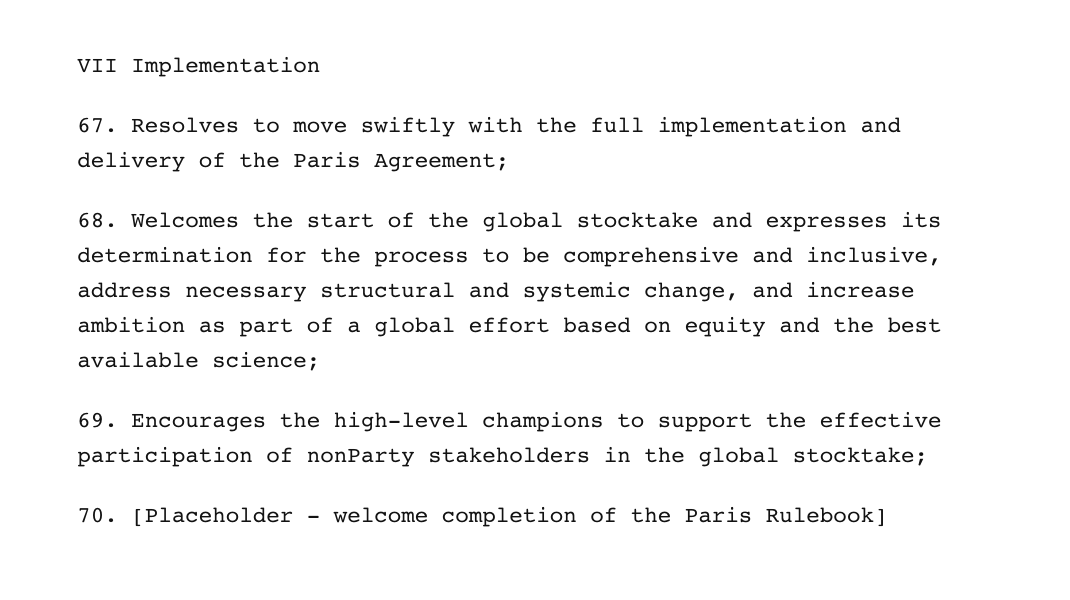
Placeholder means a piece of text is still missing, and this one says it all — six years after the signing of the Paris Agreement, the rulebook required to bring all of its provisions into force is still incomplete.
The UK hosts face an uphill task in agreeing all elements of the Paris rulebook at this COP. There are still ongoing discussions over carbon markets and their role in cutting emissions (under article 6 of the Paris accord) and over how countries must verify and report on their emissions, known as transparency and accountability.
If the UK can get the outstanding elements of the Paris rulebook finalized at this COP, it would be an extraordinary achievement. Without it, however, the COP can still be a success if enough progress is made on the substantive issues on improving NDCs and keeping 1.5 degrees C alive.
